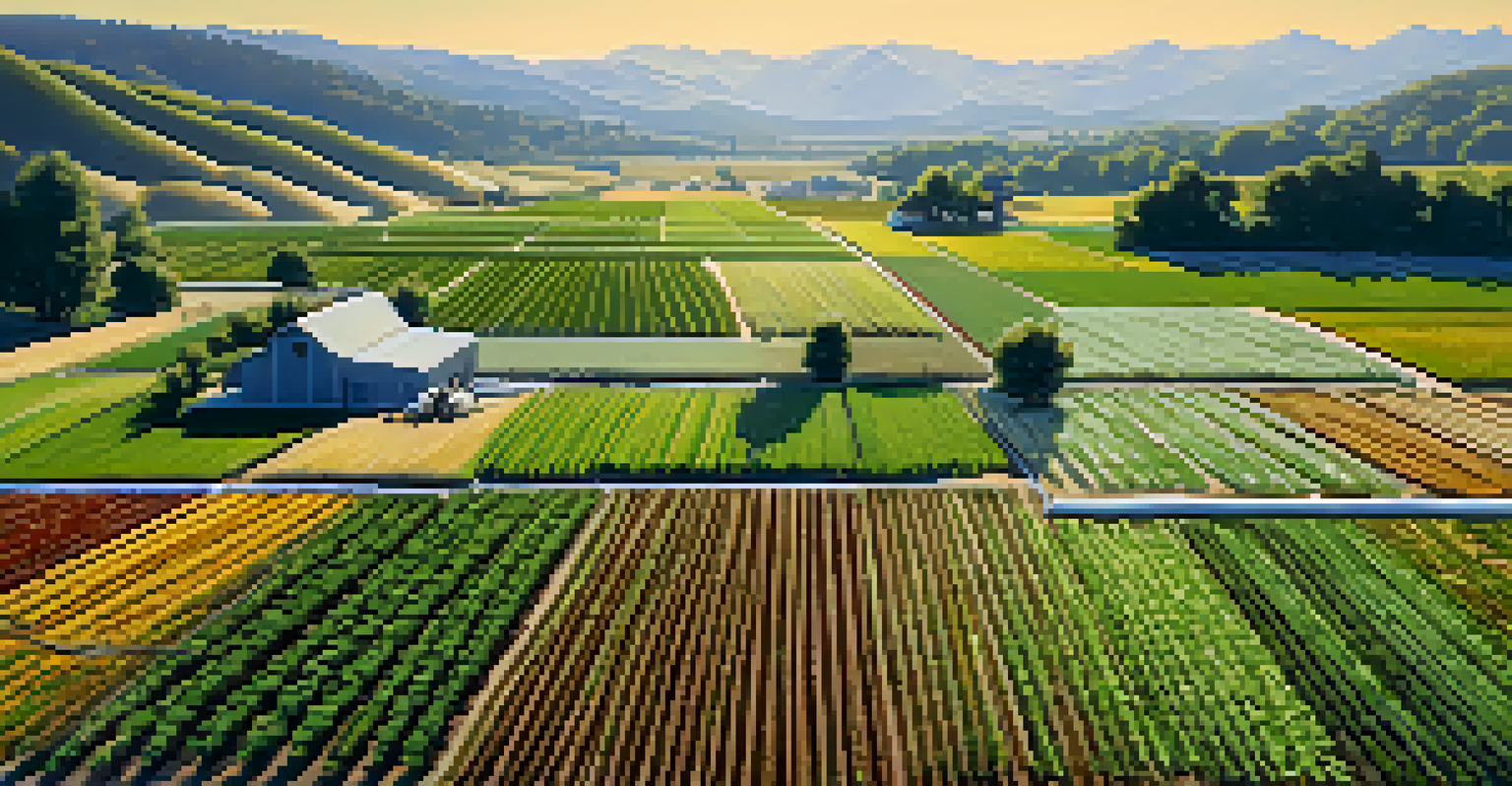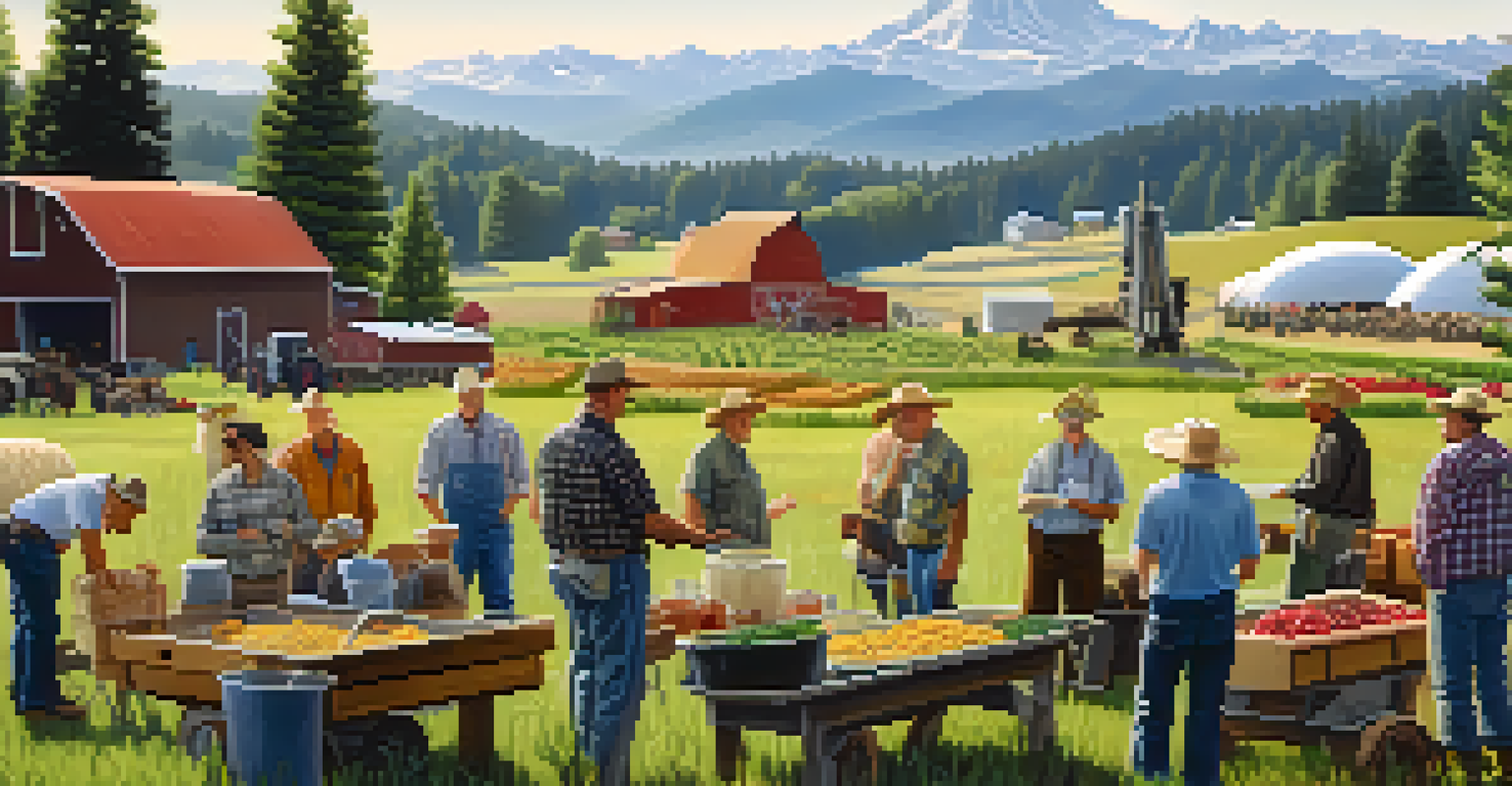The Role of Weather Patterns on Washington Agriculture Trends

Understanding Washington's Diverse Climate Zones
Washington State boasts a variety of climate zones, from the wet coastal regions to the arid eastern areas. This diversity significantly impacts agricultural practices, as different crops thrive in different conditions. For instance, the lush coastal areas are perfect for growing berries and apples, while the drier regions support wheat and barley farming. Understanding these climate zones helps farmers make informed decisions about what to plant.
The farmer is the one who is actually putting food on the table, and they need to be equipped with the right tools and knowledge to adapt to the changing climate.
The geographical features, including mountains and rivers, also play a crucial role in determining local weather patterns. The Cascade Mountains create a rain shadow effect, leading to significantly less precipitation in eastern Washington compared to the west. This has led to distinct agricultural trends in these regions, as farmers adapt to the available resources and climate conditions.
By recognizing the unique climate zones across the state, farmers can tailor their techniques to optimize crop yields. This adaptability ensures that Washington remains one of the top agricultural producers in the nation, contributing to both the local economy and food supply.
How Seasonal Changes Affect Crop Production
Seasonal changes in weather patterns can dramatically influence crop production in Washington. For example, a wet spring can lead to a bountiful growing season, while a dry summer may stress crops, affecting their yield. Farmers often rely on seasonal weather forecasts to plan planting and harvesting times, ensuring they maximize their output while minimizing risks.

In recent years, shifts in seasonal patterns have become more pronounced, leading to challenges for farmers. For instance, earlier springs can lead to premature flowering in fruit trees, making them vulnerable to late frosts. This unpredictability requires farmers to stay vigilant and adaptable, as they navigate the complexities of changing weather conditions.
Washington's Climate Diversity
The state's varied climate zones influence agricultural practices, with different crops thriving in distinct conditions.
Farmers are increasingly utilizing technology, such as climate models and precision agriculture tools, to mitigate the impact of erratic weather patterns. By analyzing data and forecasting trends, they can make more informed decisions about irrigation, fertilization, and pest management, ultimately securing their harvests.
The Impact of Extreme Weather Events
Extreme weather events, like droughts, floods, and storms, have significant repercussions for Washington's agricultural landscape. For instance, heavy rainfall can lead to flooding, damaging crops and delaying harvests. Conversely, prolonged droughts can cause water shortages, which severely impact irrigation-dependent farms.
In the face of climate change, collaboration among farmers can foster resilience and innovation, ensuring sustainable agriculture for future generations.
These extreme events not only affect the immediate crop yields but can also lead to long-term changes in farming practices. Farmers may need to rethink their crop choices or invest in infrastructure to better withstand future weather challenges. For example, some are exploring drought-resistant crop varieties or improved drainage systems to cope with heavy rains.
As climate change continues to escalate, understanding and preparing for these extreme weather events is crucial. Farmers who proactively adapt their strategies will be better positioned to ensure sustainability and resilience in their operations, even in the face of adversity.
Shifts in Crop Choices Due to Climate Change
As climate change alters weather patterns, farmers in Washington are reevaluating their crop choices. Warmer temperatures and shifting precipitation patterns can make certain crops less viable, prompting farmers to explore new options. For example, some may switch from traditional crops like corn to more heat-tolerant varieties, ensuring continued productivity.
This shift in crop selection not only helps farmers adapt to changing conditions but also impacts the overall agricultural market. As certain crops become more popular due to their resilience, we may see shifts in supply chains and pricing structures. This dynamic landscape encourages farmers to stay informed about both local and global agricultural trends.
Impact of Extreme Weather
Extreme weather events are reshaping farming practices in Washington, prompting farmers to adapt their strategies for sustainability.
Additionally, farmers are often collaborating with agricultural extension services and research institutions to identify the best crops for their changing environment. This proactive approach fosters innovation and resilience within the agricultural community, ensuring that Washington's farms remain productive and sustainable.
The Role of Technology in Adapting to Weather Changes
Technology plays a pivotal role in helping Washington farmers adapt to changing weather patterns. Innovations such as precision agriculture allow farmers to monitor field conditions closely, optimizing water usage and nutrient application. This not only helps in coping with variable weather but also promotes sustainable practices.
Farmers are also utilizing weather forecasting tools to make timely decisions about planting, irrigation, and pest management. By being informed about upcoming weather events, they can mitigate risks and enhance their productivity. For example, if a storm is forecasted, farmers can harvest their crops early to avoid loss.
Moreover, advancements in biotechnology are leading to the development of crop varieties that are more resilient to climate changes. These innovations enable farmers to maintain high yields despite adverse weather conditions, ensuring that Washington's agricultural sector remains robust and competitive.
Water Management Practices for Sustainable Agriculture
Effective water management is crucial for agriculture in Washington, especially given the varying climate conditions across the state. Farmers are implementing advanced irrigation techniques, such as drip irrigation and soil moisture monitoring, to optimize water usage. This not only conserves water but also ensures that crops receive the right amount of moisture for healthy growth.
With increasing concerns over water scarcity, especially in eastern Washington, sustainable practices are becoming more essential. Farmers are exploring rainwater harvesting and groundwater recharge strategies to ensure a reliable water supply for their crops. These innovative approaches not only support agricultural productivity but also contribute to long-term environmental health.
Technology in Agriculture
Innovations like precision agriculture and biotechnology are essential for farmers to effectively respond to changing weather patterns.
As regulations around water use tighten, farmers are becoming more proactive about their water management strategies. By adopting sustainable methods, they can enhance resilience against droughts and ensure the viability of their farming operations for years to come.
Community and Collaborative Approaches to Farming
Community collaboration plays a vital role in addressing the challenges posed by weather patterns in Washington agriculture. Farmers are increasingly coming together to share resources, knowledge, and best practices, creating a supportive network. This sense of community fosters innovation and allows farmers to learn from each other's experiences, especially in dealing with adverse weather conditions.
Local agricultural organizations and cooperatives are essential in facilitating these collaborations. They provide training, resources, and access to technology that can help farmers adapt to changing conditions. By working together, farmers can pool their resources and tackle challenges collectively, whether it’s investing in advanced irrigation systems or developing crop rotation strategies.

These collaborative efforts not only enhance individual farm resilience but also contribute to the overall sustainability of Washington's agricultural sector. By supporting one another, farmers are better equipped to navigate the complexities of weather patterns and ensure a thriving agricultural community.